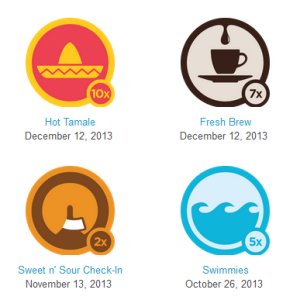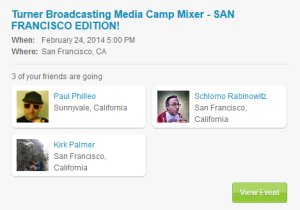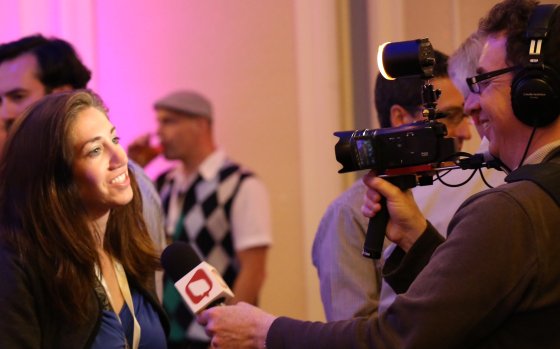In an earlier post I argued that the majority of PR pitches are like requests for anonymous sex. They don’t know me. I don’t know them. But they want us to get together for 15 minutes at a conference with the hopeful end result of me “putting out” a story about their company. Most business engagements are like dating. Some are willing to drop their pants right away and let you have at them, and others would like it if you would show an honest level of interest in them first.
I own a brand journalism business where I interview influencers, and I’m also a blogger and work with traditional media. I am constantly operating on both sides of this relationship. I know what it’s like to be a giver and a receiver. And what I’ve learned from swinging both ways is one way to make sure a request is warmly received is to make the engagement about them, not you. That simple move can swing your success metrics from 2 percent (email blast) to 90 percent (personalized invite).
Here are some techniques that I’ve used, have been used on me, or were recommended to me by some PR professionals. If you have some successful recommendations of your own, please include them in the comments. Thanks!
#1: Send “I’ve been watching you eat” customized dinner invitations
 We’ve heard the line, “Everyone has to eat,” and inviting an influencer to a meal is always a good idea. But you can improve your odds of acceptance, if you know what they like to eat, where they like to eat, and who they like to eat with. All of that information is probably very publicly available if they have an account and are active on Foursquare or Yelp. Searching their name or better their email address will reveal their profile where you can see their latest reviews, the restaurants they frequent, photos they shot, and if they garnered any specific badges (e.g.,”Hot Tamale” for 15 Mexican restaurant check ins). Also, Foursquare lets you easily see their friends.
We’ve heard the line, “Everyone has to eat,” and inviting an influencer to a meal is always a good idea. But you can improve your odds of acceptance, if you know what they like to eat, where they like to eat, and who they like to eat with. All of that information is probably very publicly available if they have an account and are active on Foursquare or Yelp. Searching their name or better their email address will reveal their profile where you can see their latest reviews, the restaurants they frequent, photos they shot, and if they garnered any specific badges (e.g.,”Hot Tamale” for 15 Mexican restaurant check ins). Also, Foursquare lets you easily see their friends.
With that info you can recommend a restaurant they like, a type of food they like, and other friendly dinner companions.
#2: Hold court at a small influencer group dinner
This week, I attended a big press event for which half the people there were employed by the company and the other half was press and influencers. They rented an expensive suite at a hotel, put out a huge spread of food, and unfortunately, it was poorly attended. The PR woman complained to me that 50 people RSVPed to the event, but less than 20 showed up. This is the nature of San Francisco events. There are so many opportunities and so many parties that one can RSVP for multiple great events and feel zero obligation to attend. I spoke for a few minutes with a few key people about the company’s product, but was more amazed at the amount of food that was wasted.
 The party’s failure was out of the PR person’s control. Her effort was spent in planning the actual “event.” For the same time, and less money, she could have just invited a small group of influencers out to a dinner, where all who attended would get to enjoy one-on-one extended conversations. A dinner invitation also holds far more weight than a party invite in which you can come or not come and go as you please. A party has a specific start time and confirmed reservations. An invite to a dinner is an obligation. Attendance is far better insured.
The party’s failure was out of the PR person’s control. Her effort was spent in planning the actual “event.” For the same time, and less money, she could have just invited a small group of influencers out to a dinner, where all who attended would get to enjoy one-on-one extended conversations. A dinner invitation also holds far more weight than a party invite in which you can come or not come and go as you please. A party has a specific start time and confirmed reservations. An invite to a dinner is an obligation. Attendance is far better insured.
I’ve been an invited guest to small industry dinners plus I’ve extended invitations to others as well. A small dinner of four to twenty people can be more valuable to relationship building efforts, future press, and your budget. To pull it off, start by selecting a group of influencers whom you’d like to invite to dinner. Pick a date, and just stick to it. Everyone has busy lives and you’ll get a lot of rejections. Work on getting one anchor influencer, and then use that anchor as a lure to bring in others to a small group dinner. Just before the dinner, send confirmations to make sure everyone will be in attendance.
#3: Interview influencers on video and publish their wisdom
This is the core of the model of my business, Spark Media Solutions. In the seven years we’ve been in business, we have found that asking for an interview, especially in person, is the simplest and most successful way to get agreement and engagement with an influencer. We refer to this technique as a PR 180 because we make the engagement about them first. People almost always say “yes” to an interview because it’s such an honor to be asked. It’s an even greater honor for someone to go through the trouble to actually publish the content, which in turn helps build their influence.
 We then make the engagement about us by publishing the video and article on our site with our branding, or our client’s branding. It’s exactly how any media outlet builds its brand. Tell compelling stories, interview experts, and publish that wisdom in the publication with the requisite branding so it’s clear to everyone where it was seen first.
We then make the engagement about us by publishing the video and article on our site with our branding, or our client’s branding. It’s exactly how any media outlet builds its brand. Tell compelling stories, interview experts, and publish that wisdom in the publication with the requisite branding so it’s clear to everyone where it was seen first.
One of the other advantages of using video is that it’s close to impossible for others to steal the content. If you write an article and quote an expert, it’s very easy for someone else to copy and paste that quote in their own article and not give attribution. If you produce video that has a microphone flag and a bug in the corner, you’ll actually want people to take it and embed it on their blog or site. That way your branding travels with the content.
#4: Be a public fan of their work
Journalists, bloggers, and influencers all become successful when someone acknowledges their work and shares it with others. The more you show interest in their work and share it with others, the more they’ll appreciate and respect you for helping them build their editorial brand. All this takes is some intelligent public response to their work. Tweet their work with a comment. Leave a comment on their blog. Share their content on Facebook, LinkedIn, and Google+ with your take on why you think it’s valuable. Make sure you @reply them in every space so they see you’re sharing their work. If you think it’s appropriate, rope in other well known influencers to the discussion by @replying both and asking a directed question.
If done well, with the appropriate interest and not the non-stop stalking aspect, they will take notice and appreciate what you’re doing. Public engagements allow them to build their public brand and they’ll probably be more responsive to a true question posed in public since it can help their build their public persona than a question posed in a private email. Once you get that engagement going, the next step to an actual pitch will be much easier.
#5: Be a party stalker
 Start by friending as many industry influencers on Facebook that you wish to connect with in real life. Don’t send generic invitations, but honest invitations to connect. It’s best to do this after you’ve done the previous step by responding to them via their social channels. Once you’ve built an arsenal of industry connections on Facebook, sign into Eventbrite and look at friend events. There you’ll see all the events they’ve RSVPed to. Use that as your guide as to which events you’ll attend. Keep in mind that an RSVP is not a guarantee for attendance.
Start by friending as many industry influencers on Facebook that you wish to connect with in real life. Don’t send generic invitations, but honest invitations to connect. It’s best to do this after you’ve done the previous step by responding to them via their social channels. Once you’ve built an arsenal of industry connections on Facebook, sign into Eventbrite and look at friend events. There you’ll see all the events they’ve RSVPed to. Use that as your guide as to which events you’ll attend. Keep in mind that an RSVP is not a guarantee for attendance.
When you meet them in person for the first time, acknowledge that you are Facebook friends and use your last online interaction as an initial point of conversation. Or reference the event you’re both attending. Then you can be straightforward and ask them if they’re currently working on any stories for which they may need help.
#6: Be an email-less pitcher
In tech, I can only think of one influencer that’s not engaged in social media. He’s an older guy who established his brand irrespective of the need for social media. This is true of journalists and bloggers as well. While everyone uses email, it’s also where they get the highest volume of messages and the highest volume of junk messages. All their other communication spaces are considerably quieter in terms of volume and junk than email. Go ahead and try using Twitter, SMS, Facebook messaging, LinkedIn, Google+, and Skype to reach out to them. Use any service, but email, unless they ask you to follow up with them in email.
If you’re fortunate enough to connect with them in some type of instant messaging space, then use their now visible availability to your advantage and ping them when you see them online.
Remember to make your initial communication about them, not you.
#7: Give them a ride
Nine years ago I attended my very first CES conference. While I was waiting at the terminal gate about to board my plane to Las Vegas, I got a call from a PR person asking if I had time to meet with his company. I told him he got me at a bad time as I was at the airport. He asked, “Would you like us to pick you up at the airport?” I said, “Of course.” It just happened to be fantastic timing on his part. There’s no way he could have actually planned to catch me as I was boarding the plane, but I would have accepted the invitation if it was a week prior because getting a cab at the airport during CES can often be a two hour experience. This offer saved me two hours of my time and about $18.
The limousine picked me up at the airport and for the ten minute drive to the hotel, they pitched me their company. I was actually jazzed about the company but more excited about getting the ride from the airport. While I was at Vegas I told everybody about the company, Podzinger, an auto-podcast transcription technology. Nine years later, I’m still talking about them even though they no longer exist.
What’s the best pitch you’ve ever gotten/given?
To any of you who has received a pitch or given a pitch. What’s your favorite technique? What works all the time? What was so unique you simply couldn’t say no? Have you been part of a long courtship that began with a pitch about you first but then eventually turned to the company? Let me and the other readers know. Thanks!
Creative Commons photo attribution to TedXMidAtlantic.




